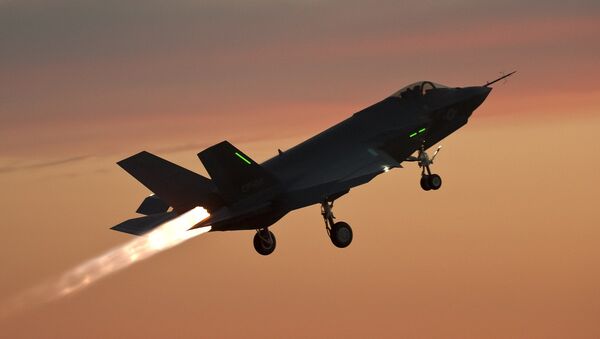New Delhi (Sputnik): The Indian Air Force (IAF) has refuted media reports which claimed that the force was keen on procuring the F-35 fighter jet from American firm Lockheed Martin.
"We have not officially asked for a briefing on the F-35 nor has any request been made to the Americans," Air Chief Marshal BS Dhanoa told The Indian Express.
No request made to US for F-35 fighter jet, says IAF chief B S Dhanoa https://t.co/BUGkQYjmhY
— The Indian Express (@IndianExpress) March 1, 2018
On February 15 of this year, Indian daily, the Business Standard had published a report which claimed that the IAF had formally requested a classified briefing by the F-35's prime builder, Lockheed Martin to procure 126 of the variant called F-35A — the air force version of the fighter which incorporates "conventional take-off and landing," or CTOL.
READ MORE: India Launches $8 Billion Program to Make Its Own Fighter Jet
Following the report, Vijainder K Thakur, IAF veteran known for his independent views had said that, if it is true, it shows shallowness in the IAF's strategic vision.
If the IAF is really pushing for the F-16 and the F-35, then the IAF is pushing for India to become a US vassal. The shallowness of the IAF's strategic vision was evident during Kargil (1999), its Myopia has only worsened!
— Vijainder K Thakur (@vkthakur) February 15, 2018
With SE MMRCA procurement dropped and the fig-leaf cover for the F-16 Block 70 pitch to the IAF blown, @LockheedMartin now has Indian journalists toiling for the F-35 on its behalf. Cheaper than the Rafale, my foot! https://t.co/lFrwSXP9kt
— Vijainder K Thakur (@vkthakur) February 23, 2018
The development comes against the backdrop of India's decision to scrap a global tender for single-engine fighter jets wherein Swedish SAAB and American Lockheed Martin were the key contenders.
Now, the IAF is expected to shortly issue a fresh tender for fighter jets, the main criteria for which will be capability and not the number of engines. On November 25 of last year, Sputnik had reported that the Indian government wanted to widen the scope for competition among global players by removing the "single engine" criteria to avert a controversy as only two manufacturers had exhibited any interest.


